

AI Sales Lead Generation: The Smart Way to Fill Your Pipeline


Let’s be real. Most sales outreach is a waste of time. You buy a lead list, blast some emails, maybe get a reply if someone’s bored enough to open it.
Meanwhile, the teams filling the pipeline? They’re not doing more. They’re doing it smarter, with AI.
This isn’t about shiny tools or marketing buzz. It’s about real systems that identify the right leads, craft more effective messages, and reduce the time it takes to schedule a meeting by half.
If your outbound is stuck in the past, here’s how to fix it.
Understanding AI for Sales Lead Generation
What is AI-powered lead generation?
AI-powered lead gen is when software finds and qualifies leads using real signals, not guesses. Think job postings, tech stack changes, LinkedIn activity, even visits to your site. The goal is simple: reach the right people, with the right message, at the right time.
Traditional lead gen? You’d pull a cold list, write a bland email, and hope someone bites. It’s slow. It’s noisy. And most of it gets ignored.
With AI, things flip. The tools monitor buying signals in real time. They fill in missing contact data. They write custom intros that make sense. So instead of spamming 500 people, you’re talking to the 5 who are in-market.
This isn’t just automation. It’s precision at scale. And it frees up your team to do what people are good at, closing.
Why embrace AI in sales lead generation now?
Because everything about outbound has changed.
Buyers are harder to reach. Inboxes are flooded. And cold calls just annoy people. If you’re still doing lead gen the old way, you're already behind.
AI flipped the script. It made outbound faster, smarter, and more cost-effective. One growth marketer with the right tools can now do what used to take an entire team. But the magic isn’t just in saving time. It’s in sending better messages to better people.
Teams using tools like Clay are scraping live data and turning it into a pipeline. Platforms like Instantly.ai send sequences that sound like a real person wrote them. It’s not just Sales anymore. Marketing is running outbound too, using AI to test hooks, learn what resonates, and generate leads that are ready to talk.
If you’re serious about growth, now’s the time to lean in. AI isn’t a nice-to-have. It’s the new baseline.
Key Components of AI-Generated Sales Leads Systems
Predictive lead scoring and lead enrichment
Not all leads are created equal. Some are just browsing. Others are ready to buy. Predictive lead scoring helps you tell the difference, before you waste time chasing the wrong ones.
AI looks at patterns. Things like job titles, company size, recent hires, tech stack, and web activity. It assigns a score based on how likely someone is to convert. The higher the score, the hotter the lead.
Then comes enrichment. AI pulls in missing details: phone numbers, emails, LinkedIn profiles, and even tools the company uses. It saves your team hours of research. No more copying and pasting from five tabs. Everything you need shows up in one place.
This combo of scoring and enrichment helps you prioritize fast. You focus on leads that look like your best customers, and skip the ones that don’t.
Intelligent outreach and personalization
The days of “Hi {First Name}, I hope this finds you well” are over. AI has raised the bar for outreach.
Now, your emails can reference a lead’s tech stack, hiring news, or even a podcast they were just on. Personalization used to take 10 minutes per contact. AI gets it done in seconds, and often writes better than most reps.
Platforms like Instantly.ai and Lemlist generate personalized intros and subject lines at scale. Clay pulls in real-time data points that make your outreach feel custom, not canned.
This isn’t about tricking people into replying. It’s about showing you did your homework, even if the homework was done by a machine.
Multi-channel engagement and guided selling
Email alone doesn’t cut it anymore. Great outreach touches lead on multiple fronts: email, LinkedIn, maybe even SMS or voice drops.
AI helps coordinate all of it. You can build sequences that ping someone on LinkedIn after they open an email. Or send a reminder text before a meeting. Everything’s timed, tracked, and optimized to keep your brand top of mind.
Then there’s guided selling. These tools give reps real-time prompts, talking points, and next-best actions based on how the lead is engaging. Instead of winging it, your team gets a playbook that adapts to each conversation.
In B2B, where deals take weeks or months, this kind of system support matters. It keeps reps focused. It keeps prospects warm. And it turns scattered outreach into a repeatable, scalable motion.
How to Use AI to Generate Sales Leads: A Step-by-Step Guide
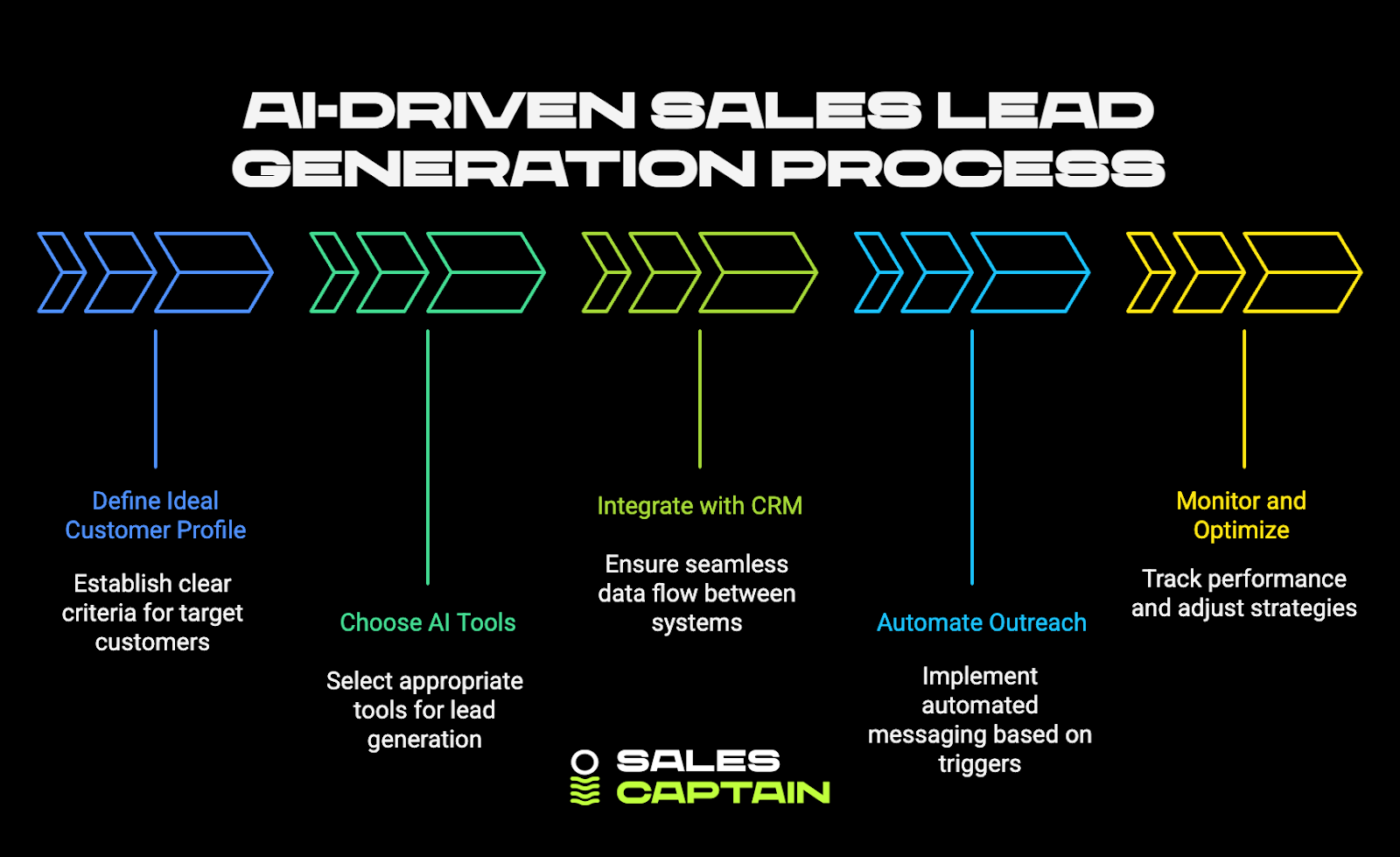
Define your ideal customer profile (ICP)
Before you do anything with AI, get clear on who you want to reach. The sharper your ICP, the better your results. Vague personas like “mid-sized tech companies” won’t cut it.
You want specifics. Industry, headcount, tech stack, funding stage, job titles, pain points. AI tools are only as smart as the inputs you feed them. A well-defined ICP helps the system know which signals to look for and which to ignore.
If your ideal customers use HubSpot, have 50 to 200 employees, and just raised a Series A, build that into your criteria. Let the AI hunt based on facts, not gut feeling.
Choose the right AI tools.
Not every platform does the same thing. Some help with scraping leads. Others handle messaging or sequencing. Start by mapping your workflow, then plug in tools where they make sense.
Clay is a must-have for data scraping and enrichment. It lets you build workflows that filter leads based on real-time data. For outreach, tools like Instantly.ai or Smartlead run multi-touch email sequences that feel personalized, even at scale.
If you want help with meeting scheduling or follow-up, look into Alta or Breeze Agents. They act like virtual SDRs that keep the convo moving.
Stack the tools that fit your ICP, your sales motion, and your team’s bandwidth. Don’t just chase the newest AI feature. Pick what solves a gap.
Integrate with CRM and workflows
Once you’ve got your tools, make sure they talk to each other. You don’t want leads stuck in a spreadsheet while your CRM stays empty.
Set up integrations so enriched leads flow directly into your system. Link your outreach tools to the CRM, too. That way, you can track who’s engaging, who’s replying, and what happens next.
This is what turns AI from a cool idea into a revenue engine. You get a full loop: find the lead, contact them, log the interaction, and track the outcome.
If your tech stack doesn’t connect, fix that first. Or you’ll just end up with more manual work, not less.
Automate outreach and follow-up
Now that your leads are flowing, it’s time to reach out. AI helps you do this in a way that feels personal, not robotic.
Use triggers to send messages based on real actions. For example:
- A lead downloads your whitepaper
- A company hires a new Head of Growth.
- Someone visits your pricing page three times in a week.
Each of these can trigger a tailored message, sent automatically, with smart follow-ups if there’s no reply. The goal is to show up at the right moment with something relevant, not just spam people into submission.
Conversational AI tools can even reply in-thread and handle common objections. They book meetings, answer FAQs, and keep the momentum going.
Monitor, optimize, and iterate
The biggest mistake people make? Setting it and forgetting it.
Track what’s working. Look at open rates, reply rates, booked meetings, and lead-to-close conversion. Then tweak your messaging, signals, or ICP based on the feedback.
AI gives you fast data. Use it. Try new subject lines. Switch up your hooks. Test different signals or lead sources. Treat outbound like a lab, not a checklist.
The teams that win are the ones who launch fast, learn fast, and adjust constantly. AI makes that possible, but only if you keep tuning the system.
Leading AI Tools for Sales Lead Generation
There’s a lot of noise in the AI tool space. Everyone claims to “revolutionize outbound.” Most are just dressed-up spreadsheets. These do something.
Clay
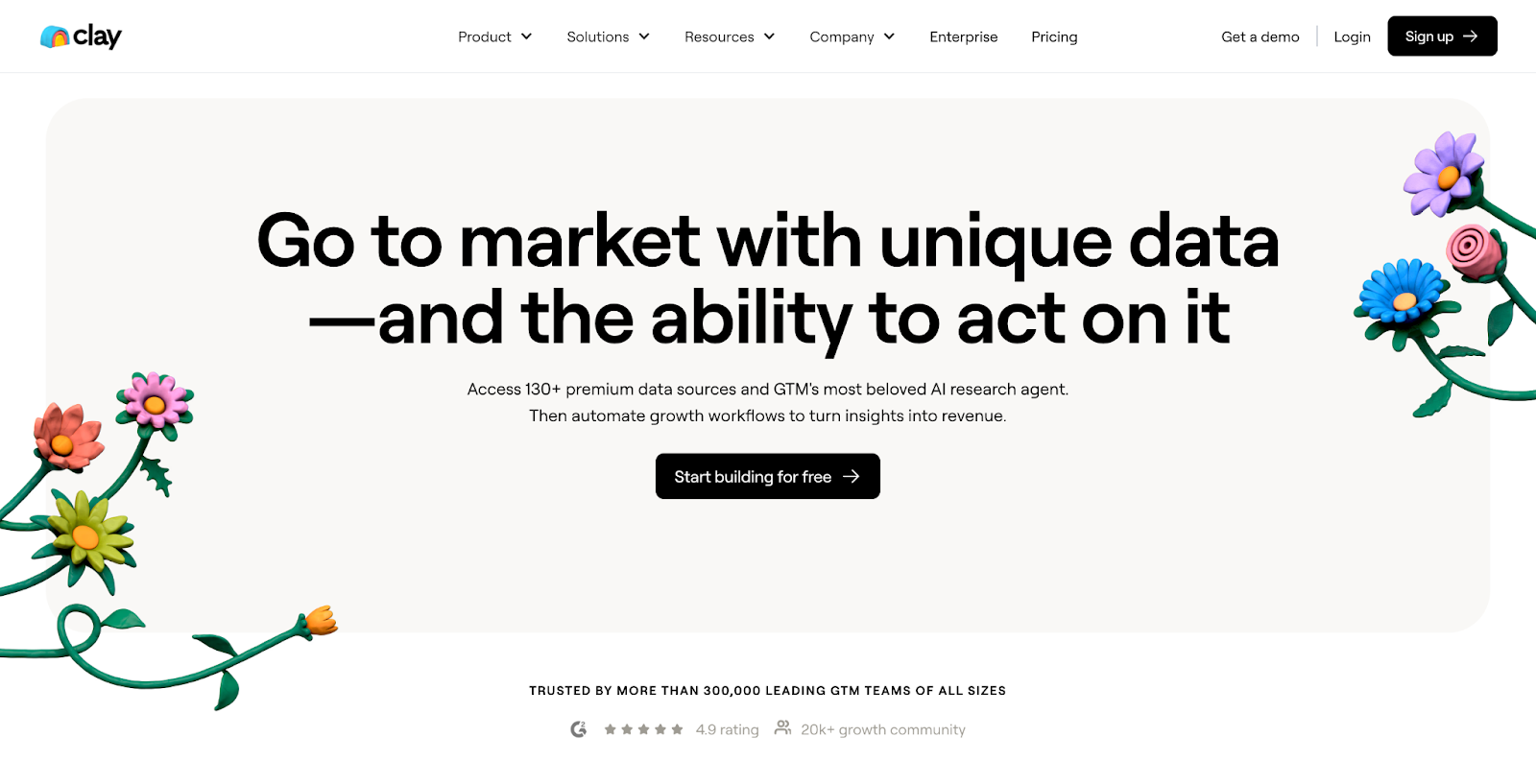
Clay is the brains of modern lead gen. Think of it like a spreadsheet, a data scraper, and an automation tool all rolled into one, but way smarter.
Why people love it:
Clay lets you build custom lead flows using live data. You can pull from LinkedIn, Crunchbase, job boards, company websites, and even tools like Google Maps. Want to find every SaaS company in New York hiring SDRs and using HubSpot but not Salesforce? You can do that in minutes.
It’s not just about finding leads. Clay also enriches them, including email, phone, job title, tech stack, and scores them based on the signals you choose. Then you can push those leads into your outreach tool or CRM automatically.
Where it needs work:
Clay is powerful, but it takes a minute to learn. If your idea of lead gen is uploading a CSV and pressing “go,” you’ll need to slow down and rethink. The UI can be intimidating at first, especially for non-technical folks. But once you get it, it clicks.
Who should use it:
Growth teams, marketers, or founders who want full control and aren’t afraid to build. This is the tool you give to the person on your team who asks “why” five times a day and reads documentation.
Instantly.ai
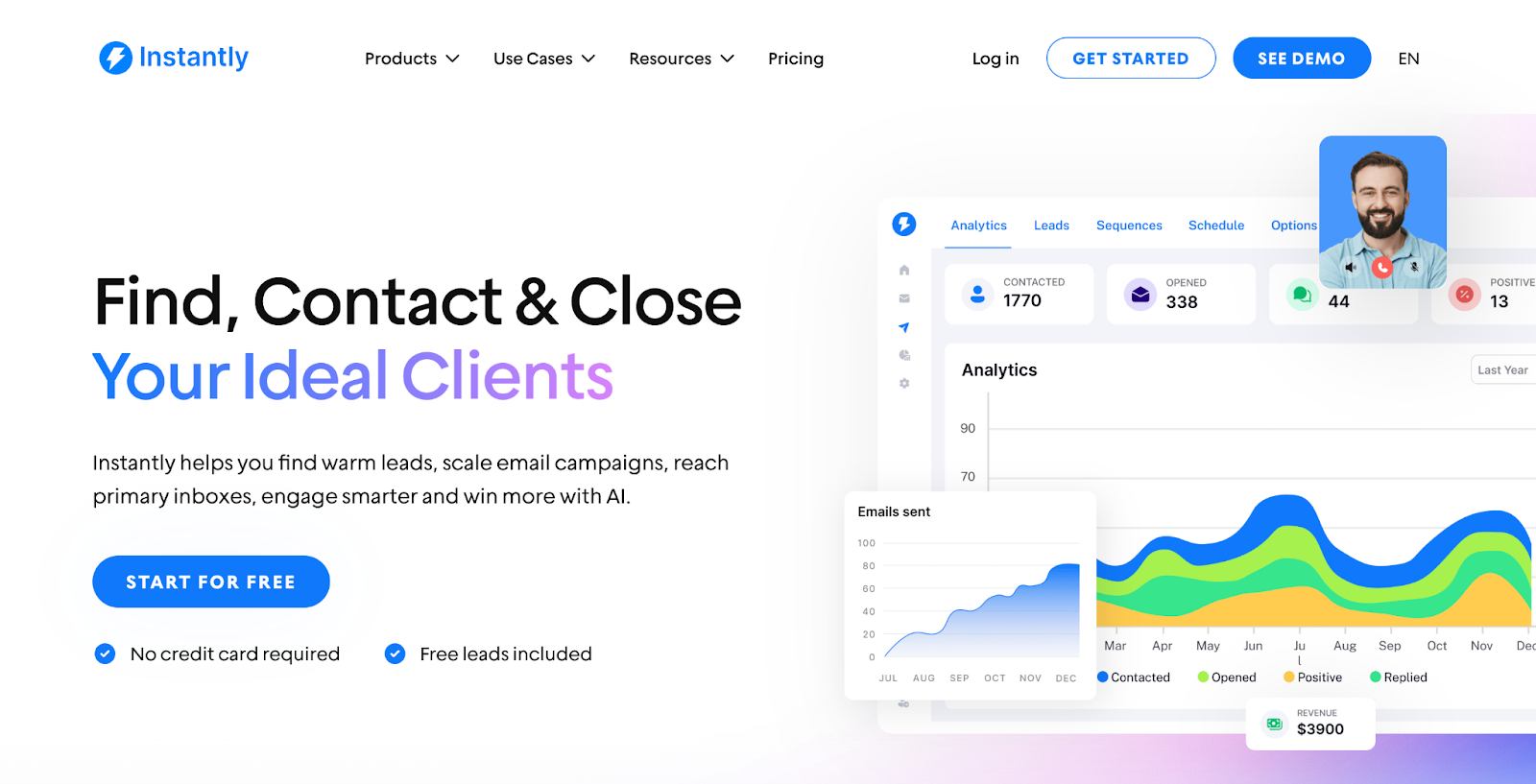
Instantly is built for scale. You’ve got a list. You’ve got messaging. Now you want to hit 5,000 people without landing in spam. That’s where Instantly shines.
What it does well:
You can connect multiple inboxes to rotate through senders. It warms up domains automatically. You can A/B test subject lines and intros. You get reporting that makes sense, open rates, clicks, replies, and positive responses, all in one place.
It also supports team collaboration, custom variables, and conditional logic. That means you can get pretty advanced with personalization without writing a single line of code.
Where it needs help:
It’s not an all-in-one platform. It doesn’t scrape leads or enrich data. If your list is messy, your results will be too. Also, while it personalizes at scale, it’s still up to you to write good copy. AI helps, but it won’t fix bad strategy.
Who should use it:
Teams that already have good lead data and want to send at volume. If deliverability and automation are your biggest headaches, this is your fix.
Alta
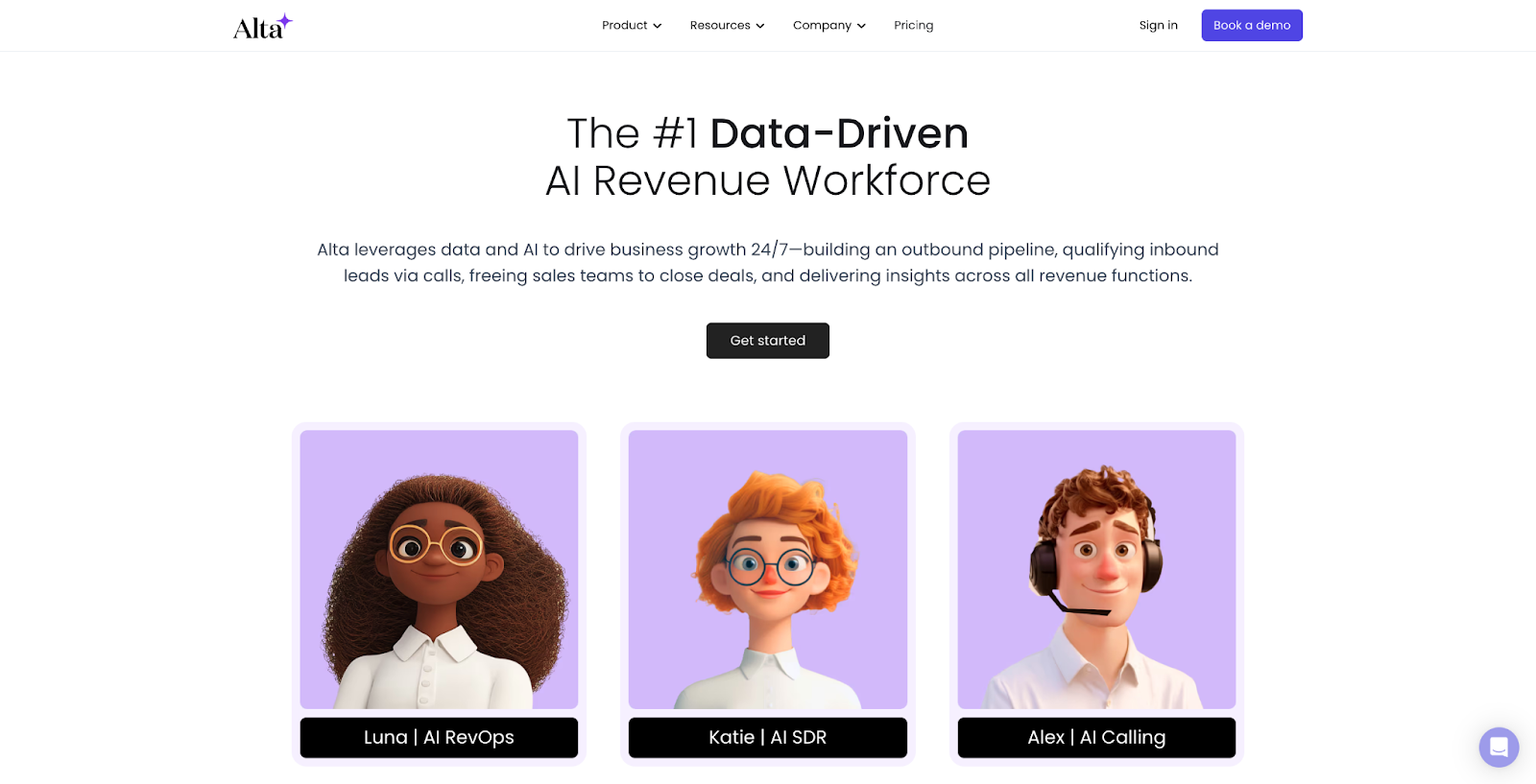
Alta is like giving your SDR a Red Bull, a calendar, and a bot assistant, then letting them run 24/7.
What it does well:
Alta acts as an autonomous agent. It identifies leads, sends emails, replies based on context, follows up on schedule, and books meetings directly to your calendar. The best part? It gets smarter over time. It learns from which messages work and adjusts accordingly.
The experience is more conversational than transactional. Instead of sending five generic follow-ups, Alta can reply with things like “Just checking in, did this fall off your radar?” in a way that feels human.
Where it needs help:
Because it’s doing so much, there’s a learning curve to configuring it right. It’s great for fast-moving sales cycles, but if you need deep ABM-style targeting or highly custom messaging, you may need to layer in other tools.
Who should use it:
Lean teams that want to “set and forget” their outbound engine, especially startups without a full-time SDR. Also great for founders who want meetings booked while they sleep.
Emerging Solutions
These tools are newer, but they’re moving fast and filling specific gaps:
Leadzen.ai
This one’s for when you just need clean, verified data, fast. It’s a real-time lead database that focuses on accuracy. No fluff, no long setup. Just punch in your filters and go. The data quality is good, but it doesn’t offer the deep workflows of Clay.
Kular
Built for smaller teams. You set your ICP, and it runs outbound for you using AI agents. It's less customizable than something like Clay, but easier to use out of the box. Feels like a modern version of Apollo, but less bloated.
HubSpot Breeze Agents
If you live inside HubSpot, these AI agents are a solid add-on. They tap into your CRM, analyze engagement, and suggest next steps. Still early, but could be great for reps who don’t want to jump between five tabs to figure out what to do next.
Each of these tools solves a different piece of the puzzle. Pick the ones that match your motion, your volume, and your team’s appetite for complexity. A smart stack beats a big one.
Benefits Of AI in Sales Lead Generation
Efficiency and productivity gains
AI handles the grunt work. The parts of lead gen that usually take hours, like sourcing, enrichment, and follow-ups, now take minutes. You don’t need a full team combing through LinkedIn or manually building contact lists. The system does it for you.
That means more time for actual selling. Instead of spending half the day cleaning data, your reps can focus on conversations. The results stack up fast. More output. Less burnout.
Higher-quality leads and better conversions
AI doesn’t just help you go faster. It helps you go after better leads.
Instead of chasing random titles, you’re targeting people who show intent. Maybe they just raised funding. Maybe they’re hiring in your category. Or maybe they’ve been poking around your pricing page.
Signals like that matter. AI spots them. Then it crafts outreach that feels specific, not spammy. Relevance gets replies. Replies turn into meetings. And meetings with the right people are way more likely to close.
Cost savings and real revenue lift
Here’s where things get obvious. When you replace manual work with automation, you cut costs. You don’t need a room full of SDRs just to hit your numbers. You need smart workflows, clean data, and one person who knows how to run the system.
But this isn’t just about saving money. It’s about making more of it. AI helps you reach better-fit leads, faster. That means shorter sales cycles, smoother handoffs, and more deals moving through the pipeline.
You’re not just being efficient. You’re building a revenue engine that scales.
Challenges & Best Practices for AI-Generated Sales Leads
Data privacy and ethical AI
Just because AI can scrape data from everywhere doesn’t mean you should use it without thinking. Privacy laws like GDPR and CCPA exist for a reason. If you’re pulling personal contact info or behavioral data, you need to know where it’s coming from and how it’s being used.
The biggest risk? Running campaigns on sketchy data sources that aren’t compliant. It only takes one angry recipient to cause a legal or brand headache.
There’s also the ethical side. AI scoring can introduce bias if your inputs aren’t clean. If your models only favor a certain type of company or persona, you might be excluding good-fit leads without realizing it.
Best practice? Use trusted data sources, stay transparent about how leads are identified, and always build with compliance in mind. That way, you scale without crossing a line.
Balancing automation with the human touch
AI is powerful, but full automation can backfire fast.
You’ve probably seen the result: sequences that feel robotic, replies that go nowhere, or worse, an AI trying to book a meeting before the lead has even shown interest. It’s a shortcut, not a strategy.
There’s a line between working smart and sounding fake. The best teams use AI to get 80 percent of the way there. Then they add a human layer where it counts.
That could mean customizing your first message. Or jumping in when someone replies. Or even just reviewing the lead list before it goes live. Don’t remove your reps from the process; give them better tools to do what they already do well.
Ensuring accuracy and trust
AI is only as good as the data it runs on. If your enrichment sources are outdated or your scoring rules are off, you’ll end up chasing the wrong leads.
Worse, if a prospect spots incorrect info in your message, like the wrong job title or company size, they’ll tune you out. You lose trust instantly.
This isn’t about being perfect. It’s about being careful. Always double-check your data before launching big campaigns. Spot-check a few records. Test your signals. And give your reps the option to flag anything that looks off.
Trust builds a pipeline. Accuracy gets you in the door.
Future Trends in AI Sales Lead Generation
Agentic AI is taking over first-touch prospecting
Most people think automation means scheduling emails or scraping contacts. That’s already old news. The next wave is agentic AI, tools that behave like human reps, but act entirely on their own.
These agents don’t just follow a script. They decide who to contact, what to say, when to follow up, and how to adjust based on replies. They check websites, spot buying signals, write custom intros, and keep the conversation going until someone books a call.
We’re moving from “AI helps you prospect” to “AI is the prospector.”
That doesn’t mean humans are out. It means they’re freed up to focus on later-stage conversations, account strategy, and creative plays that move deals. The grind work is gone.
Blended AI models are making outreach smarter
It’s not just about scraping or sending anymore. The best systems are combining multiple types of intelligence, natural language, predictive scoring, and even visual recognition, into a single motion.
Imagine this: an AI scans a company’s website to check if they have a “Careers” page with new SDR roles posted. It also looks for tech logos in the footer to identify tools in use. Then it analyzes past email replies to see what kind of tone works best for that persona. All before your message goes out.
This blend of signals gives you a lead that’s not just high intent, but hyper-relevant. And it makes the outreach feel custom without writing it from scratch.
The tools that can mix these inputs cleanly, without clunky setups or guesswork, will win.
Real-time guidance is replacing sales scripts
Instead of handing reps a dusty playbook, AI is starting to guide conversations live.
That could mean surfacing talking points based on the lead’s last reply. Or showing conversion predictions while a rep writes an email. Or flagging the moment when someone shifts from “just curious” to “likely to book.”
It’s like having a coach sitting next to every rep, but one that reads data, not vibes.
This kind of support turns average reps into consistent performers. And for new hires, it shortens ramp time by a mile. The faster you learn what works, the faster you grow your pipeline.
FAQs
These are leads that AI systems find, score, and engage with automatically. The system pulls data from public sources, looks for buying signals, enriches the contact info, and even writes personalized messages. No cold lists. No guesswork.
Manual lead gen is slow and messy. Someone builds a list, checks LinkedIn, writes emails one by one, and follows up by memory. AI skips all of that. It scales the process, makes it repeatable, and does it with real-time data. You get more volume and better precision.
Absolutely. Tools like Breeze Agents and Kular are built for lean teams. You don’t need a big budget or a full ops team. If you have a clear ICP and a few hours to set things up, AI can do the rest. It levels the playing field.
Most top tools offer native integrations with CRMs like HubSpot, Salesforce, or Pipedrive. Once connected, leads flow straight into your system. You can sync statuses, track activity, and keep your pipeline clean without copying and pasting anything.
Start with the basics: reply rate, conversion rate, meetings booked, lead quality score, and revenue generated. If your AI stack is working, you’ll see faster cycles, fewer bad leads, and a lower cost per acquisition.
Yes, and they matter. Privacy violations, spammy outreach, biased lead scoring, or over-relying on automation can all hurt your brand. The key is using clean data, staying compliant, and knowing when to let a human take over.
RELATED ARTICLES
Check out more articles on our blog!
RELATED ARTICLES
Lorem ipsum dolor sit amet, consectetuer adipiscing elit, sed diam nonummy nibh euismod tincidunt ut laoreet dolore magna aliquam erat volutpat.


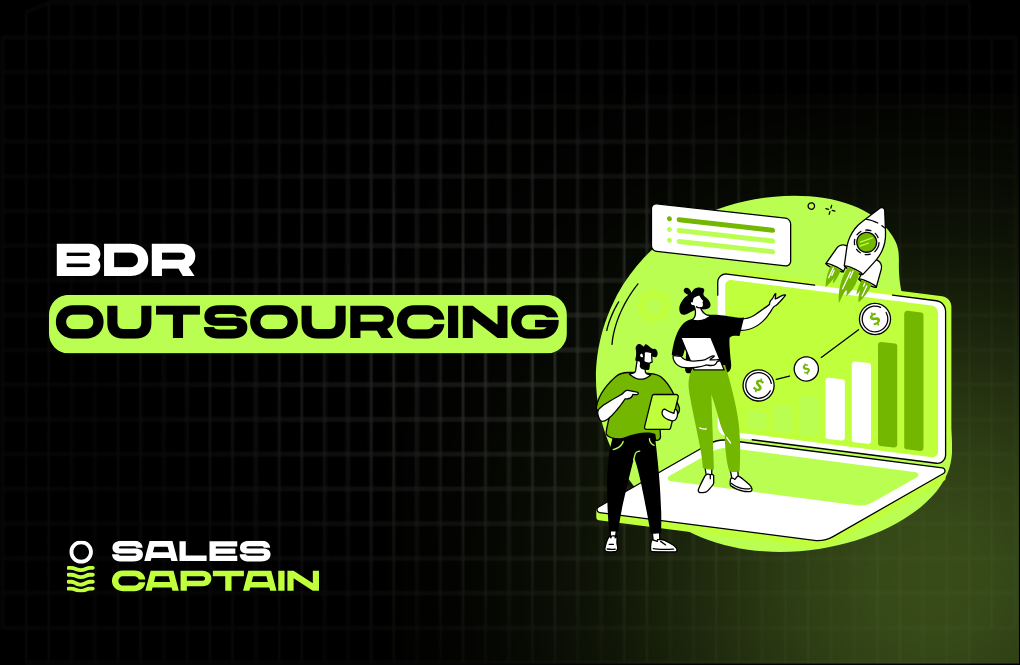

.jpg)





